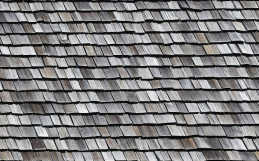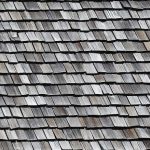Do you find small, gravel-like particles accumulating in your gutters or notice bald spots on your roof shingles? If so, you might be dealing with a common roofing issue called granular loss.
Those small, pebble-like particles protect your roof from weather conditions and UV rays, so addressing this issue promptly is crucial to maintaining your roof’s integrity and lifespan.
What Causes Granular Loss?
Granular loss on shingles occurs when the protective granules on asphalt shingles start wearing away, leaving the underlying material exposed. This process can be accelerated by weather conditions, age, poor installation, or physical damage.
Identifying Granular Loss
Inspect your roof regularly for signs of granular loss. Look for bald spots on shingles, excessive granules in gutters or downspouts, or a coarse, sandy texture on the surface of the shingles.
DIY Solutions for Roof Granular Loss Repair
1. Cleaning and Maintenance
Regularly clean your gutters and remove debris from the roof surface to prevent granule buildup and potential damage.
2. Patching and Sealing
For minor granular loss, use a specialized roof sealant to patch affected areas. Apply it carefully to make sure the exposed asphalt is protected.
3. Professional Inspection and Repair
Contact Warner Roofing for assistance if you notice extensive granular loss or damage. We can evaluate the situation and recommend appropriate solutions.
Preventing Future Granular Loss
It’s always best to take preventative measures, whatever roofing concern it may be. Regular roof inspections and maintenance are key. Trim overhanging branches, ensure proper attic ventilation, and promptly address any leaks or damages to prevent further granular loss.
Granular Loss FAQs
Can I repair granular loss on my own?
Minor granular loss can be addressed with DIY solutions like cleaning, patching, and sealing. However, extensive damage may require professional assistance to ensure proper repair and protection.
How do I know if granular loss is severe enough to warrant professional help?
If you notice bald spots, widespread granular loss, or significant damage, it’s advisable to consult a professional roofer for a thorough inspection and appropriate repairs.
Is granular loss covered by homeowners’ insurance?
Typically, granular loss due to natural wear and tear is not covered. However, if the loss is due to a storm or sudden damage, your insurance policy may cover the repair costs.
Granular loss on your roof shouldn’t be ignored. Regular maintenance and prompt repairs can prolong your roof’s life. If you’re uncertain about the extent of granular loss or need professional assistance, reach out to Warner Roofing for a thorough inspection and repair, if needed.
Protect your home by addressing granular loss before it leads to more significant issues. Contact us today for a comprehensive roofing assessment and repair services.







